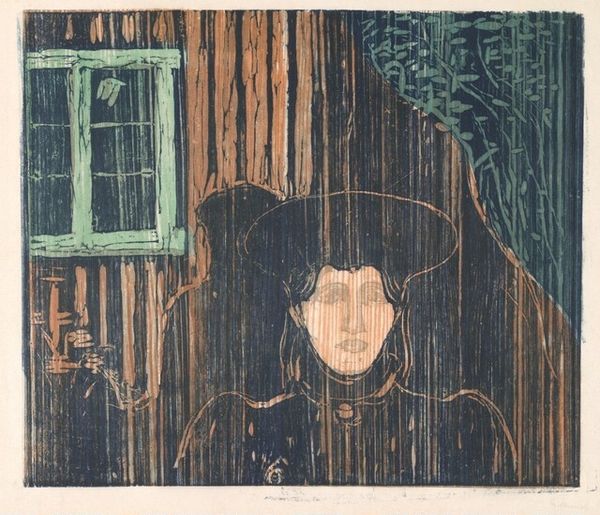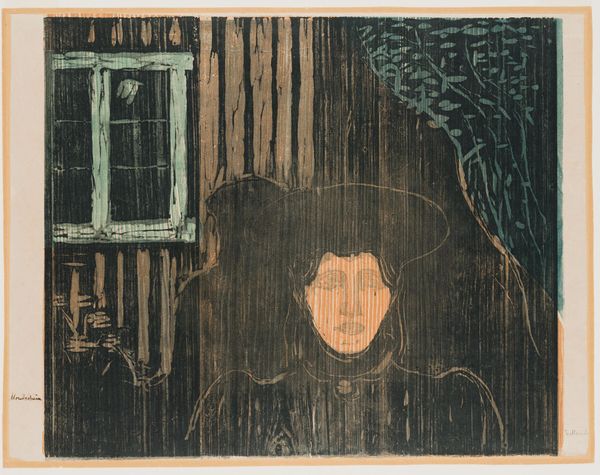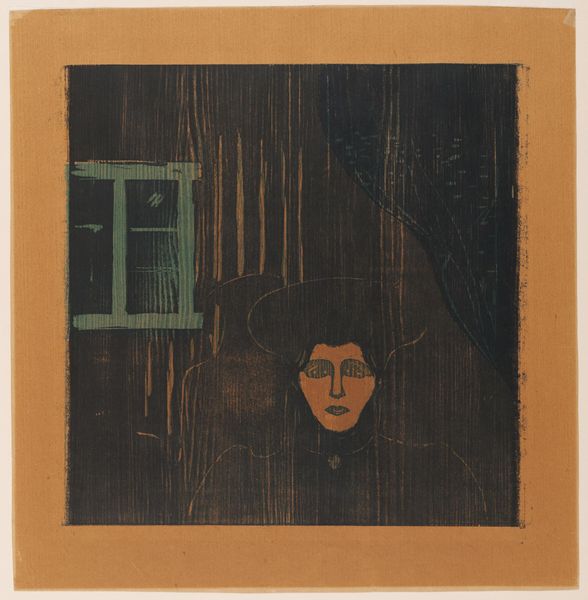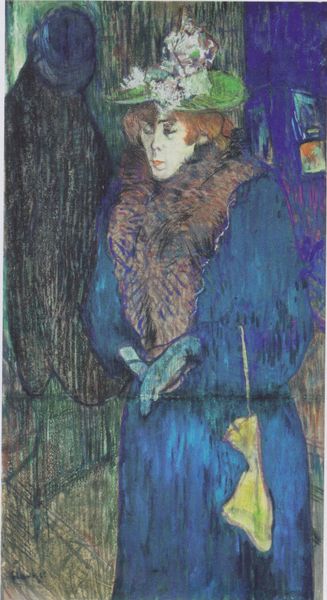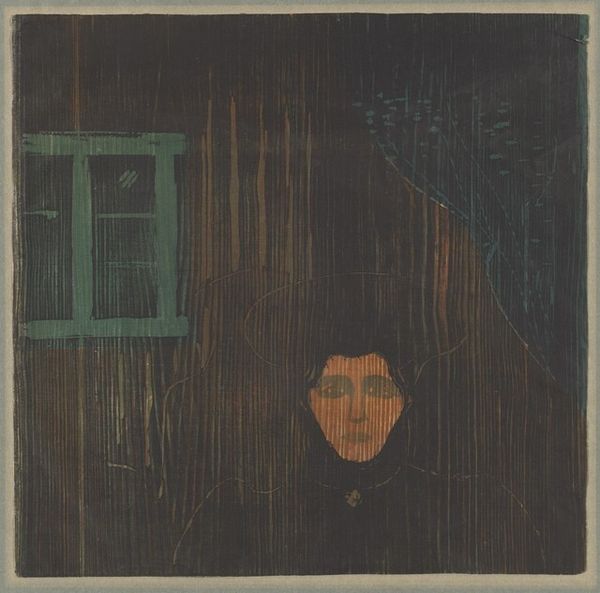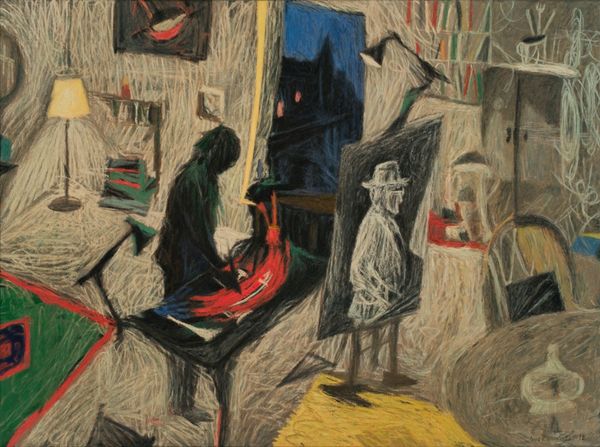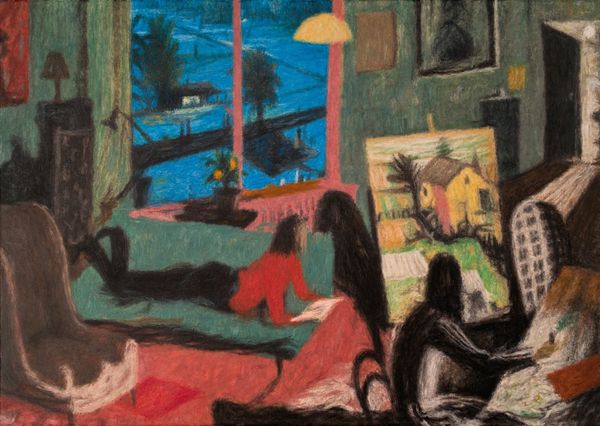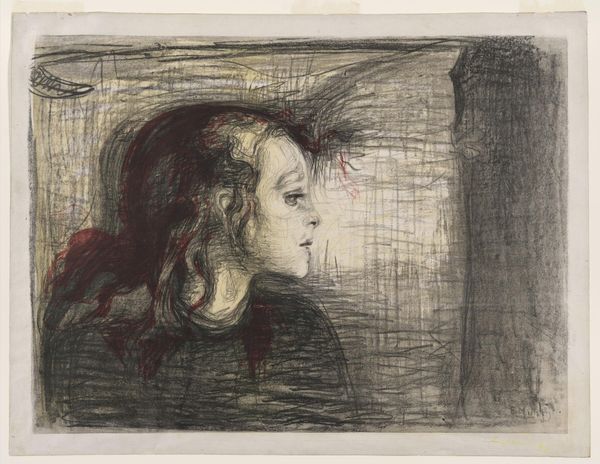
painting, impasto
#
figurative
#
painting
#
impasto
#
expressionism
#
symbolism
Copyright: Public Domain: Artvee
Curator: Here we have Edvard Munch’s "Moonlight," created in 1896. What are your immediate impressions? Editor: A sense of deep melancholy. The woman's face, pale against the oppressive darkness, it is just haunting. There is something otherworldly here, the way her visage looms from the depths of night. Curator: Absolutely. Munch was profoundly interested in how emotions could be communicated visually, a hallmark of symbolism. Let’s consider the application of paint; look at the impasto brushwork, applied with an almost crude and raw energy. It is such a gestural method that allows for the emotional output. The brushstrokes create tangible depth, reflecting perhaps the density of emotional labor he invests within the painting's conceptualization. Editor: Right. The moonlight illuminating her face serves as more than just a light source. Moonlight in art and literature has frequently symbolized the hidden, the irrational, and often, feminine mysteries. I can't help but wonder, in Munch's symbolic vocabulary, does the spectral presence of this woman connect her with this tradition? Curator: Possibly so. We have to recall, though, the social context of art creation during this period, and reflect that this was most probably also made from the commercially accessible resources from art suppliers which became so key during this period. I’m also thinking about his choice of impasto style paint, probably the cheapest option for a young, less financially secure artist who wished to push art historical boundaries within material reach. Editor: That certainly grounds it. Yet the window nearby suggests a boundary between the domestic space and the infinite unknown of the outside world, amplifying themes of inner turmoil and solitude. The contrast between the geometrical and asymmetrical is captivating; what is Munch communicating by having it presented that way? Curator: It suggests a dynamic and ongoing dialogue between order and disorder, very likely resonating to societal change and individual resistance, themes Munch tackled, both consciously and unconsciously. Considering also the application of thick layers paint to the window frames, contrasting with flat washes on her skin is yet another means of layering different processes. Editor: In short, he creates an entire network of subtle yet potent symbolic interactions. Curator: Precisely, it underscores not just personal turmoil, but Munch’s artistic development at a key point in his career, particularly his exploration of production and presentation, creating works like this within a relatively financially restrictive art-making background. Editor: A powerful meditation, then, on human fragility amidst a symbolically-charged universe. Curator: A sentiment cleverly captured by the artist's strategic method of affordable material and making practice within 19th Century Scandanavia, too.
Comments
No comments
Be the first to comment and join the conversation on the ultimate creative platform.
